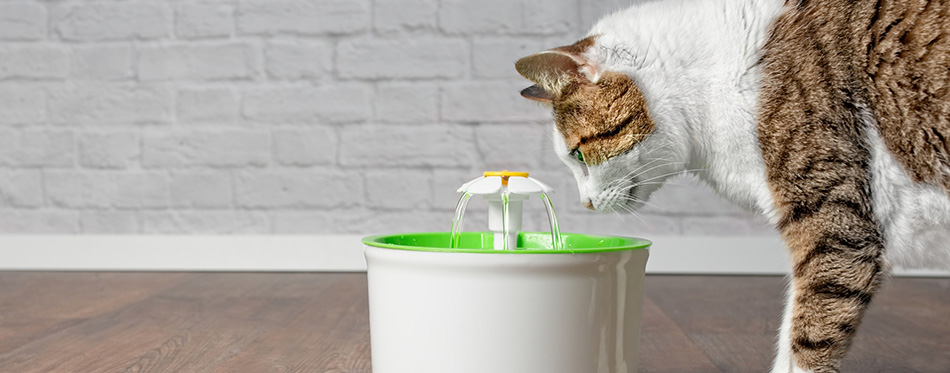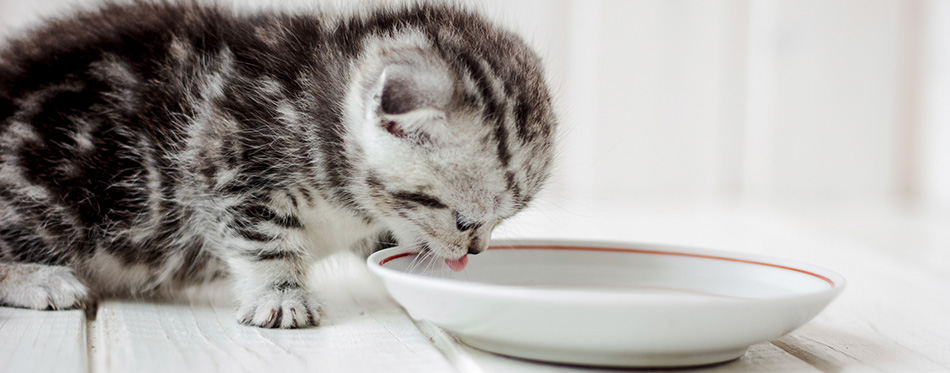Cats need water. While it is true that the majority of cats do not go out searching for water to drink, they still need water for them to survive. Cells and tissues depend on water for them to function well. And for a predator like cats, well-functioning cells and tissues are crucial. You may give your feline friend water, but is it enough? Do you know how much water your furbaby should be drinking every day?
How Much Water Do Cats Need to Drink Every Day?
Cats in the wild seldom go to ponds and lakes to take a few gulps of water. This is because their hydration needs are already supplied by the moisture in their prey. These animals that cats prey on contain 70 to 80 percent moisture. The figures are often enough to ensure the normal functioning of its cells and tissues.
The problem is that domesticated cats do not have prey animals to feast on. The closest they can ever get to consume prey-like moisture levels is by eating wet or canned cat food. These can contain 72 to 82 percent moisture, which is almost identical to the moisture content of prey animals.
But the question remains. How much water do cats have to drink every day?
Healthy adult cats require 0.67 to 1 ounce of water for every pound of their body weight. As such, if you have a 10-lb cat, then it should consume at least 7 ounces of water every single day. However, take note of the word “consume”. This is different from “drink” since it can also include a cat’s food intake.
As already mentioned, typical wet cat food can contain up to 80% moisture. If we have a 5-ounce can of wet cat food, this means that its moisture content is about 4 ounces. If your cat can consume this food in one day, this means it still needs 3 ounces of water to maintain its hydration. These additional 3 ounces can come from the water from cat water bowls or cat drinking fountains. It can also come from other cat-safe food items that contain moisture. It can include watermelons and cantaloupes.
If you are feeding your cat kibbles, then the additional water intake may be higher. Dry cat food, on the average, only maxes at 12% moisture. For example, if you give your cat 4 ounces of dry cat food every day, this means your cat is only consuming at most 0.48 ounces of moisture. This also means that it needs to get an additional 6.52 ounces of moisture from other sources.

Checking Your Cat’s Hydration Status
Dehydration is one of the greatest risks of not drinking enough water. Unfortunately, monitoring your cat’s water intake will not give you a clear picture of its hydration status. There are ways, however, that will help you determine if your feline friend is dehydrated or not.
- Perform the Skin Tent Test
In humans, we call this test as the test for skin turgor. It involves pinching a loose fold of skin and releasing it at once to assess how fast it returns to its normal state. You can perform the same test on your cat.
Try to pinch the loose skin on your cat’s shoulders. It is important to grasp only the layer of the skin, not including the fat and muscles underneath. Pinch it upwards and release it at once. If your cat is well-hydrated, its skin will return to its normal state very fast. If your cat has dehydration, the return of the skin will be very slow. In severe cases of dehydration, the skin might retain its “pinched” position. This can resemble a “tent”; hence, the term skin tent test.
This test is one of the easiest ways to determine the hydration status of cats. It’s not perfect, though. Some pet parents may pinch the muscles and fat, which can give false negative readings. That’s why you should also assess other parameters to bolster your suspicion of dehydration in your cat.
- Check for Sticky Gums
Gently rub one of your fingers on the cat’s gums. A well-hydrated kitty will have moist and pinkish gums. However, if you feel the gums to be somewhat tacky or sticky, then it is possible that it is poorly-hydrated. A more severe sign of dehydration will be dry gums.
Look for Sunken Eyes
Cats suffering from dehydration will often have sunken eyes. The eyes may seem to be deeper than usual. It is also possible to have eyes that look dull. These are signs of potential dehydration in cats.
- Assess the Other Signs of Dehydration
There are other clinical manifestations that may corroborate your suspicion of feline dehydration. This can include increased heart rate and less frequent urination. The increase in heart rate is the heart’s way of compensating for the reduced blood volume as a result of dehydration. Since there is a lower volume of blood, the heart will try to pump faster to meet the metabolic needs of the cells.
The reduction in the frequency of urination is also a compensatory mechanism. The kidneys will try to conserve as much water as they can by reducing the production of urine. This helps channel water from the urine back into the blood.
Other signs of dehydration may include loss of appetite, lethargy, depression, diarrhea, vomiting, and excessive panting. Bear in mind that these symptoms are not 100% indicators of dehydration as other health problems may produce similar symptoms.

Getting Your Feline Friend to Drink More Water
While your cat may not show any sign of dehydration yet, this should not make you complacent. As a pet parent, it is still your responsibility to make sure that your feline furbaby is getting enough water. Here’s how you can help your cat to consume more water.
- Place Water Bowls in Strategic Locations Inside the House
One of the reasons why some cats don’t drink that much is because they only have access to a single water bowl. This might not also be very accessible from their favorite nook. As such, it is better to place several cat water bowls in strategic locations inside your house. Make sure that these are far from its feeding area and its litter boxes.
- Invest in a Good Pet Drinking Fountain
Everyone knows that cats are predators. They are very curious with anything that moves. As such, when you compare water from an ordinary bowl to water cascading down a cat drinking fountain, guess where your cat will go? This is one of the greatest strengths of pet drinking fountains. They circulate water throughout the system, creating movement. It is this movement that cats interpret as an indicator of the presence of prey. They will inspect it and drink from it in an effort to “catch” the prey. This is also the reason why most cats like drinking from the faucet in your kitchen.
- Add Flavor to Its Drinking Water
We all know how cats can be very picky. Since water doesn’t have any flavor, your cat may not find it appealing. To make water more “enticing” to your cat, you need to add flavor to it. Some pet parents have luck adding the broth from a can of tuna while others use clam juice. There are also those who add low-sodium chicken or beef broth. The point here is to make water as “appetizing” to the cat as possible.
- Provide Fresh and Cold Drinking Water
Cats love cold and fresh water to drink. That is why many pet parents add ice cubes in their cat water bowls to help lower the temperature of the water. The ice cubes bobbing up and down in the water can also act as a stimulus for cats to take a sip. They will think that the ice cubes are prey animals. It may also help if you can create ice cubes with blended fruits like watermelon. This will enhance the flavor of its drink.
- Clean Water Bowls and Other Cat Drinking Items on a Regular Basis
It is also important to clean their water drinking gadgets on a regular basis. Stagnant water can become smelly over time. Germs can grow, which can increase the risk of waterborne diseases in your cat. Dirt and other particles may also contaminate the water, making it less refreshing to drink. Clean cat water bowls every day. If you are using a cat drinking fountain, check the manufacturer’s recommendations on the frequency of cleaning. These may come with filters, too, that require regular cleaning.
- Replace Your Water
Sometimes the main problem is the water itself. It may have a certain taste that cats do not like. This may be the case if you’re giving your cats tap water to drink. A good solution is to filter tap water so you can remove whatever is making it taste bad. You can also purchase bottled water for your pet to drink.
Whether your cat is eating canned or dry cat food, it is still important for it to drink. Ensuring that it drinks its recommended water intake every day is crucial to safeguarding your cat’s health.
Sources:
- How Much Should Cats Drink? – Pet MD

